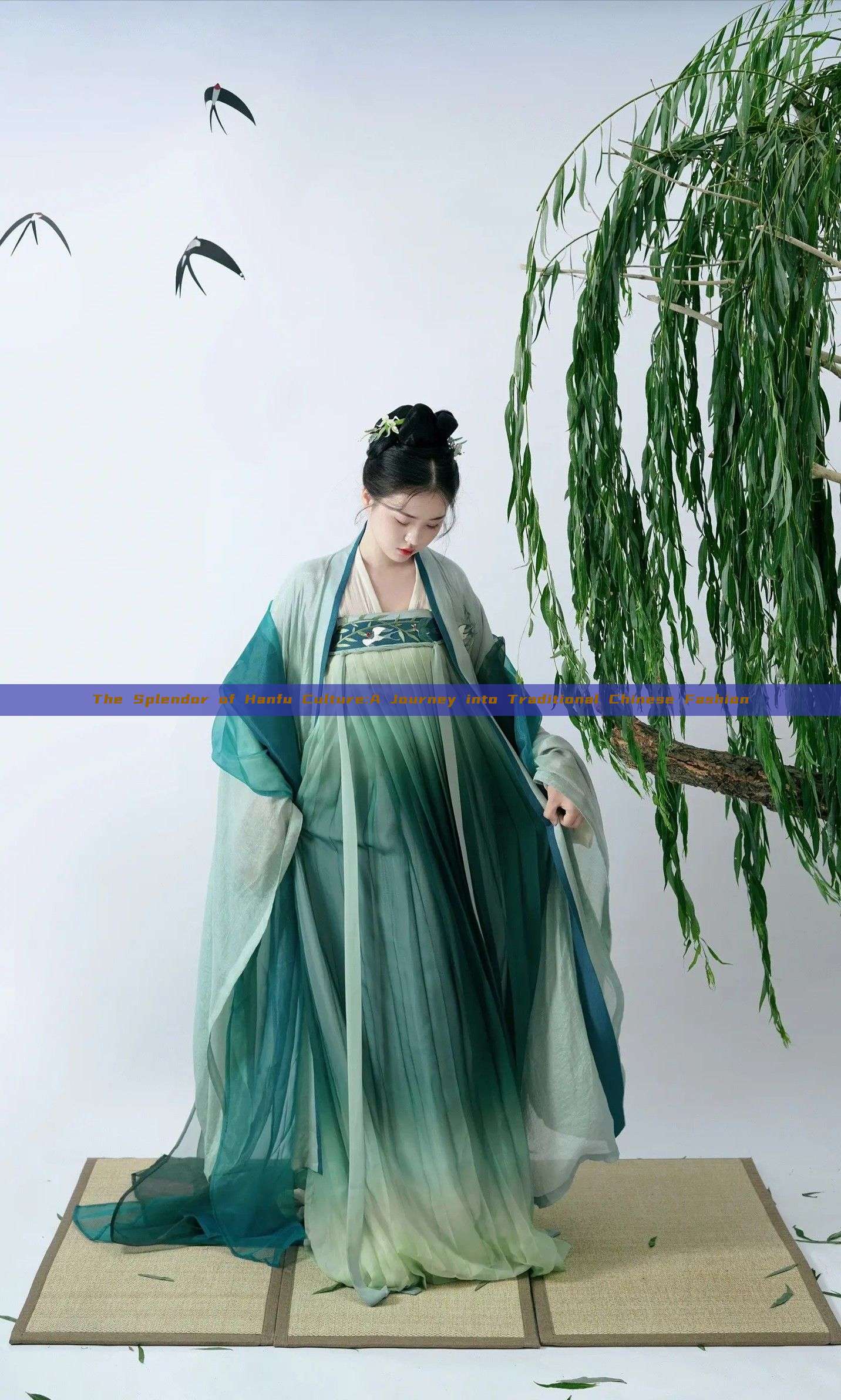The Splendor of Hanfu Culture:A Journey into Traditional Chinese Fashion
In the vast and diverse cultural landscape of China, Hanfu culture stands out as a vibrant testament to the rich history and tradition of the country's clothing. Hanfu, also known as Han Chinese traditional clothing, encapsulates thousands of years of history and craftsmanship, embodying the essence of ancient Chinese aesthetics and philosophy.

The origins of Hanfu can be traced back to the pre-Qin period, with layers of cultural influence from various historical epochs, including the Han Dynasty (206 BC – 8 AD), the Tang Dynasty (618-907 AD), and the Ming Dynasty (1368-1644 AD). Each era left its unique mark on the design and aesthetics of Hanfu, resulting in a wide array of styles and patterns that are both visually appealing and deeply symbolic.
The essence of Hanfu lies in its intricate designs and craftsmanship. The use of natural materials like silk, cotton, and hemp is common, with each material carrying its own unique properties and symbolism. The designs often incorporate traditional elements such as dragons, phoenixes, clouds, flowers, and birds, which are not just visually appealing but also carry deep cultural and symbolic meanings. The intricate patterns and designs are often achieved through techniques like embroidery, weaving, printing, and dyeing, which are all passed down through generations.
One of the most striking features of Hanfu is its adaptability to different occasions and social roles. From ceremonial robes for royal courts to everyday wear for commoners, Hanfu comes in various styles and designs to cater to different needs. The color and style of the clothing often reflect the wearer's status, age, gender, and the occasion.
The revival of Hanfu culture in recent years is a testament to the enduring appeal and relevance of traditional Chinese clothing. More and more people, especially young people, are embracing Hanfu as a way to connect with their cultural roots and heritage. The community of Hanfu enthusiasts is growing rapidly, with events like cultural festivals and cosplay competitions providing platforms for them to showcase their passion and creativity.
However, the preservation and promotion of Hanfu culture also face challenges. With the rapidly changing fashion trends and the influence of globalization, it is important to strike a balance between preserving traditional elements and adapting to modern tastes. This requires a deep understanding of the history and philosophy behind Hanfu, as well as a commitment to preserving the craftsmanship and techniques involved in its production.
In conclusion, Hanfu culture is not just about clothing; it is an embodiment of thousands of years of Chinese history, culture, and philosophy. The intricate designs, use of materials, and the symbolism involved are all deeply connected to the cultural identity of the Chinese people. The revival of Hanfu culture is a powerful way to connect with our cultural roots and promote cultural diversity. As we move forward, it is important to strike a balance between preserving traditional elements and adapting to modern tastes, ensuring that the beauty and essence of Hanfu are carried forward for generations to come.

 Previous Post
Previous Post



